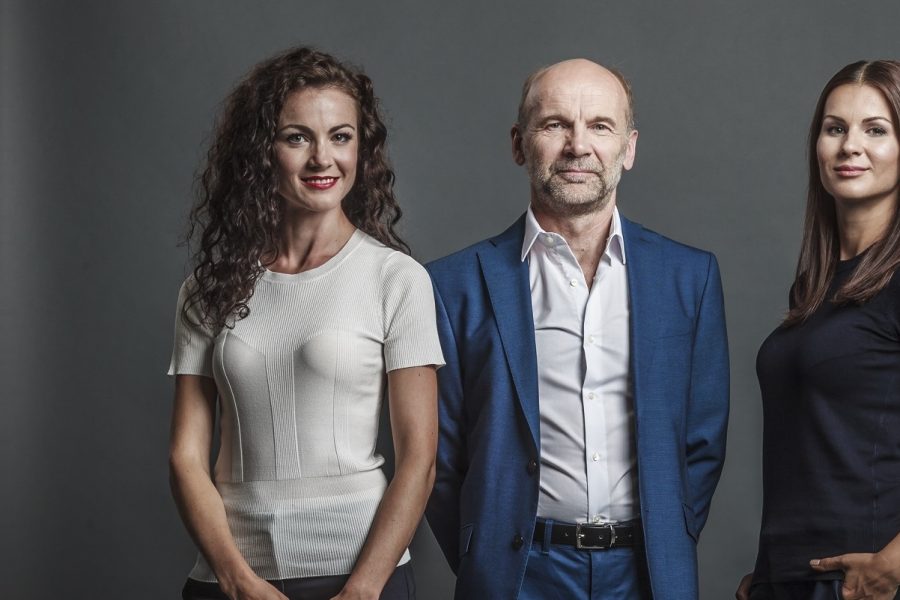Reach for the moon, boy! Do what you’ve always dreamed about. Go for it! Be what you’ve decided to be and become. – Boy, do what you’ve always trying to attain, but don’t reach for the moon. Keep your feet on the ground. Be realistic.
It was under the cross-pressure of these two states of mind, feeling encouraged on the one hand, be on one’s guard on the other, Alfred Vassilkov, the head designer of exclusive and luxurious Estelon loudspeakers, was considering the continuation and future of his business opportunities in the beginning of the 2010s. He was assured that he was technically and professionally capable of making world-class products. In that respect all that was needed for the success, to fulfill the dream, was there. On the other hand, he must have felt the risk of stepping into bigger boots, the safety and temptation of proceeding more slowly, being conservative and minimizing the risk.
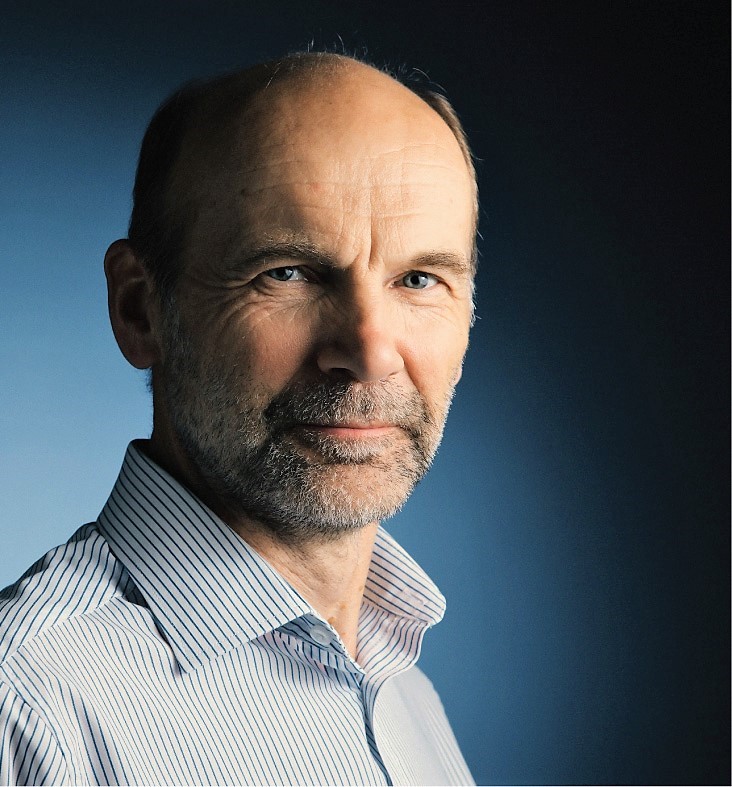
”At that point of time I would not have managed without my daughters”, Alfred now acknowledges. Just previously he had drifted into contradiction with the company for which he had been designing loudspeakers for so long, and set out to make it true what he’d been dreaming of: manufacturing his own molded sculptural loudspeakers.
Six seven years later both of his daughters, Alissa and Kristiina Vassilkov, are involved in running the company day in day out, as they have since the very beginning in 2010, Alissa as a manager/CEO and Kristiina as the head of the marketing and promotion – and Alfred doing what he knows best: developing quality loudspeaker.
The factory tour
It was a sunny day. I remember because to see the sun in the late autumn in these latitudes is a rare event. Alissa knew that on the very same day year before the first snow landed on the ground in Tallinn, Estonia. We were driving toward an industrial area south of Tallinn center. Estelon HQ used to be in a glass tower on the other side of the city, but as Alissa explained me, it became too small for the purpose especially as they wanted have all operations be under the same roof.
Entering the new premises I was first welcomed by a row of unfinished speaker cabinets, then some staff members, and finally two gray kittens with funny names. From there I was escorted to a largish listening sanctuary, which judging from our voice that suddenly took a different tone, was acousticated if not completely at least to a great extent. A pair of majestic Estelon Extreme Legacys were humming in the background. Coffee and biscuits on the coffee table, we sat down on the couch to talk about Estelon – now and then.
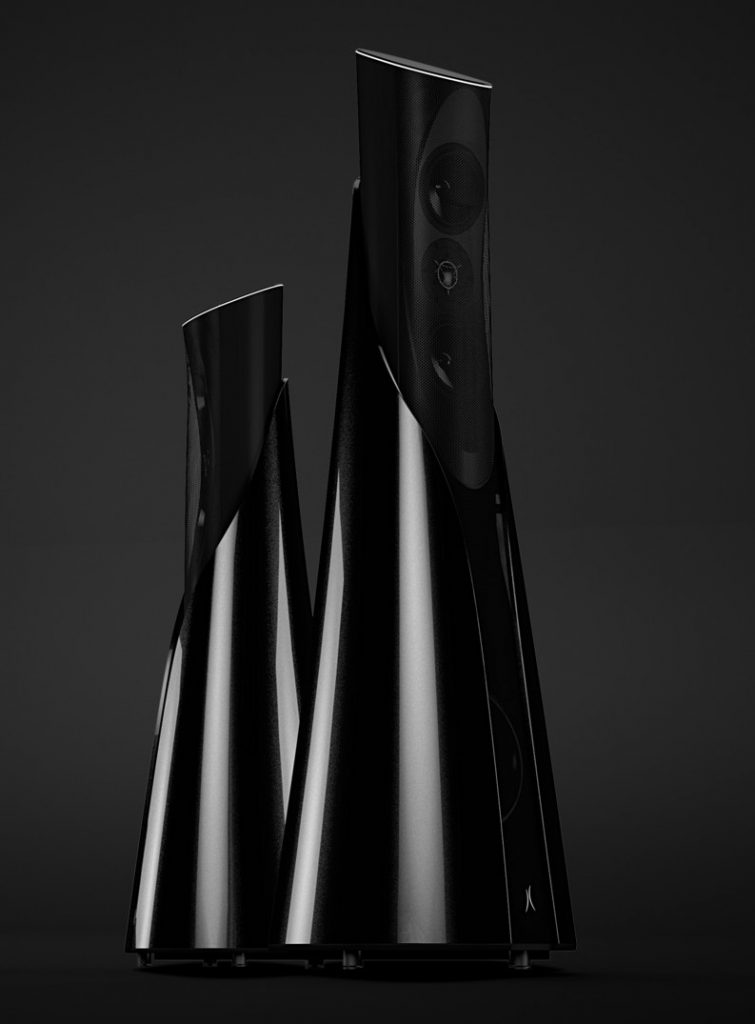 From red to blue
From red to blue
To see how the company reached the point of no return in 2010, we have to go back to the 1980s, 70s even. In fact, it’s instructive to divide the history of Estelon into three periods: pre-independence, post-independence, and 2005 onwards.
Before Estonia’s new independence, Alfred’s personal history, from boyhood to adulthood, was like that of many other men, West or East: looking into radios (tube radios especially) or other electronic devices, dismantling and assembling them, trying to modify them as one best can, fascination about the world of components, configurations and constructions. I’d be really surprised if there were a loudspeaker or amplifier designer somewhere without this more or less universal background!
Another relevant fact for the Estelon story is that before the independence, hi-fi equipment – electronics and loudspeakers – were being manufactured by a state-owned company (originally a private Estonian company established in 1935), which for the Baltic region was RET (Raadio-Elektroonika Tehas), whose products, from the late 1950s onwards, were marketed under the brand name Estonia. Some vintage Estonias still fill the two walls of the corridor leading to the listening space. Alfred lent his expertise to the company for designing some of the speakers. Why is that an important piece of information?
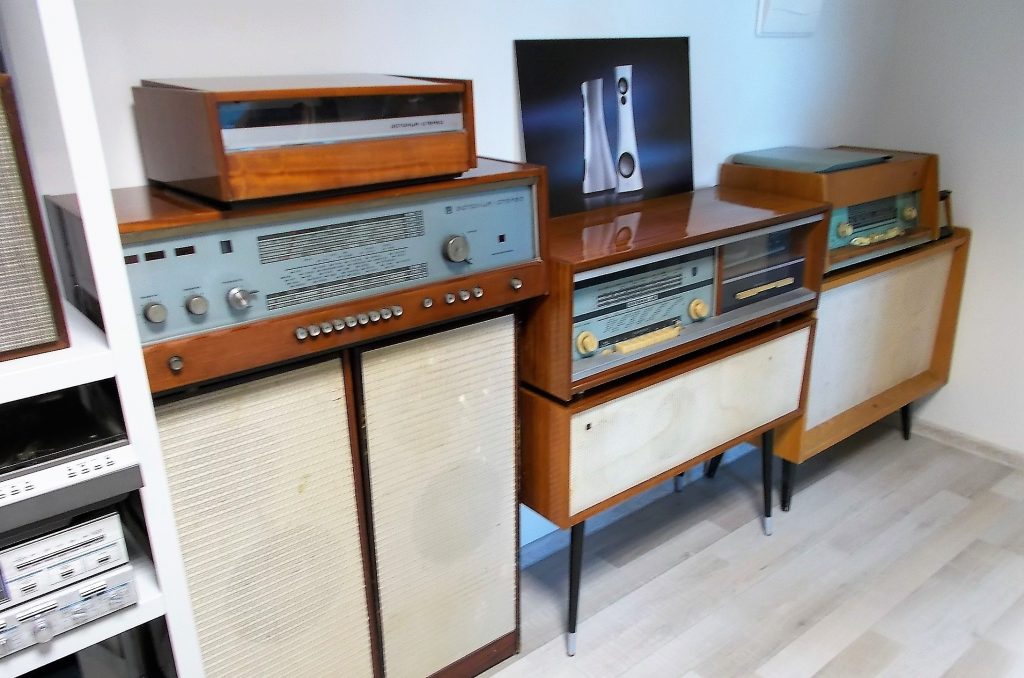
Doing is learning
Here’s why. When Estonia became independent in 1991, the work of the RET was continued by a company called Audes (Audio from Estonia). It still exists. For a long period of time, Alfred designed loudspeakers for Audes, as an independent consultant and designer, and was involved in numerous speaker projects (Alfred’s own estimate is that all in all he had a finger in the pie in more than 100 loudspeaker models before settling on his own Estelon brand). Some of the Audes’ practices and mindsets perpetuated from the RET period, and inversely placed the seed for Alfred’s having a speaker of his own in some foreseeable future.
”It was good and busy time. We started to design speaker models for international markets, which of course we knew not much about. We built speakers, as the habit was, by testing them and by making measurements abiding very stringent standards, but subjectively listening to the sound quality … musicality, stereo image, dynamics and other such parameters … ranked not high at the preference order. The spirit was that speakers are to be made like tanks, not caring too much about the sound quality or individual preferences.”
The period of time in the service of Audes was of far-reaching importance to Alfred, as it was there and then he learned one or two crucial truths about speaker building, eg. that to make speakers to meet certain requirements of the test bench was not everything.
”I realized that the thing was to learn to build sound-quality, not just a loudspeaker as a technical product. I also realized that the sound-quality is a function of two speakers working together, not just one. The measurements are, as we all know, made with one loudspeaker only. Special attention should be paid to the co-effect of two speakers. And third, I learned that the speakers must be designed to work in real rooms! Not just for some hypothetical ideal conditions.”
The lesson of the story is the following: prior Estelon, during the period Alfred worked for Audes and some other projects, he obtained the solid theoretical foundation of speaker building, eg. how to design decent crossovers for 3 – 4 way speakers (one of hardest things in speaker building), but he also learned that reality often departed from theory, and requires different kind of thinking.
For instance, an inevitable part of the reality is how the speaker looks. It would be wrong to say that Audes, or RET before it, would not have paid any attention to the design aspect but through his own speakers Alfred could take this (consideration of the looks) to an entirely different level.
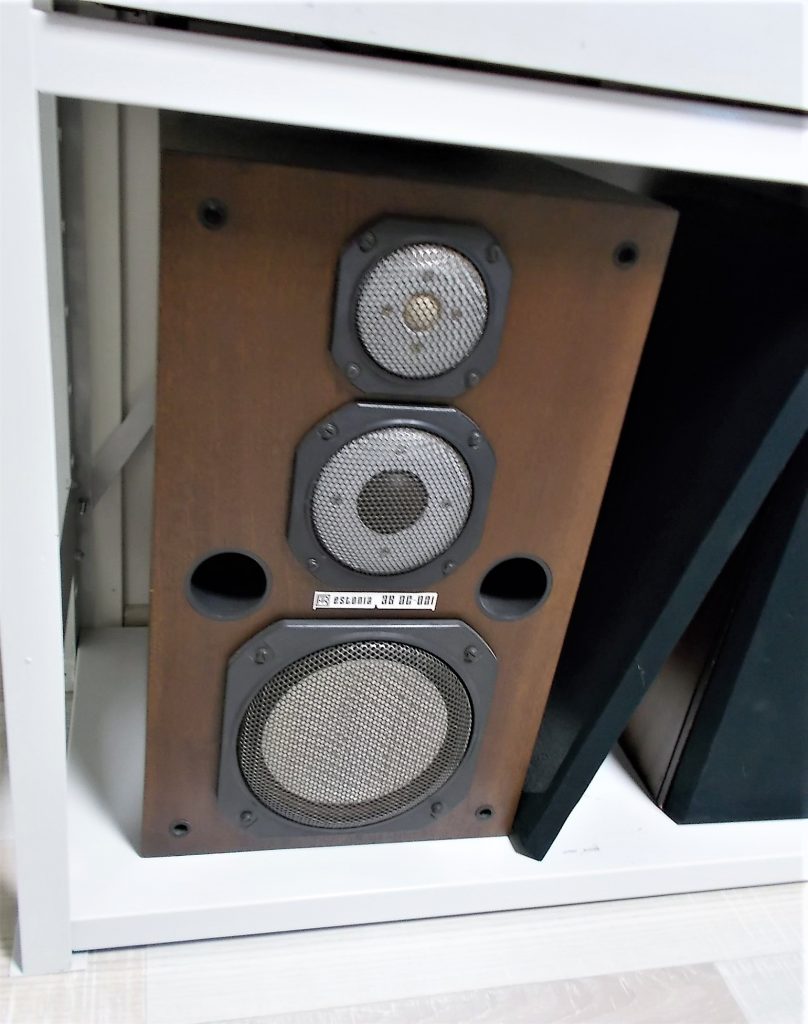
The time at Audes also gave Alfred the opportunity to observe what happens on the world market, and how those markets behave. From early 2000 onwards Alfred represented Audes at various international shows, Frankfurt, Munich, CES, Stockholm etc. It was at one of those shows (I’d say Frankfurt) I first learned to know Alfred, after having been introduced to him by an Estonian friend. I remember Alfred as a man with a cautious smile, a little keyed up and insecure perhaps, but who knew his speakers in and out and was always a nice and warm and friendly person to talk to. And under Alfred’s supervision Audes did make some serious effort to break in on the international level (eg. early versions of the Orpheus flagship).
The idea of a new speaker
Between 2005 and 2010 Alfred begun to entertain less conventional ideas and hopes about building his own speakers to his own liking. The ideas concentrated around the use of different materials, new drivers (Audes made and still makes their own drivers), crossover parts and especially cabinets. All of these, according to Alfred’s comprehension, had limitations in traditional designs. MDF as a cabinet material has limitations, square boxes have limitations, drivers have limitations. Hence, Estelon!
For one thing, Alfred says, MDF is not that strong as it’s claimed to be (internal damping), and certainly not strong enough for Estelon’s purposes (even though they do make proto-types out of MDF). Nor is it a very stable material eg. in terms of temperature variations. First and foremost, it’s not a suitable material for non-square shapes, and it was precisely rectangular/squared boxes with flat front panels that Alfred wanted to get rid of if he’s going to build his own speakers.
So the right cabinet material was the first variable to decide upon.
Right from the beginning, Alfred had been thinking of the possibility of making rounded cabinets with the help of a molding process. Not just any material is good for that. Corian, for instance, which Alfred had also shortlisted, is a composite material (composed of acrylic polymer and alumina trihydrate) that is widely used for molding purposes, but it wasn’t good enough for the use Alfred intended it to be used. So Alfred had to develop his own marble-based component – the principal Estelon innovation – which is now used in Estelon loudspeaker models throughout. It tells much of the severity of the challenge that the supplier had to be changed once or twice before finding the right one. Now Alfred’s been happy for some time already.
Would you believe this (below) is a loudspeaker pair? It is indeed. A pair of Estelon beauties waiting to be finished.
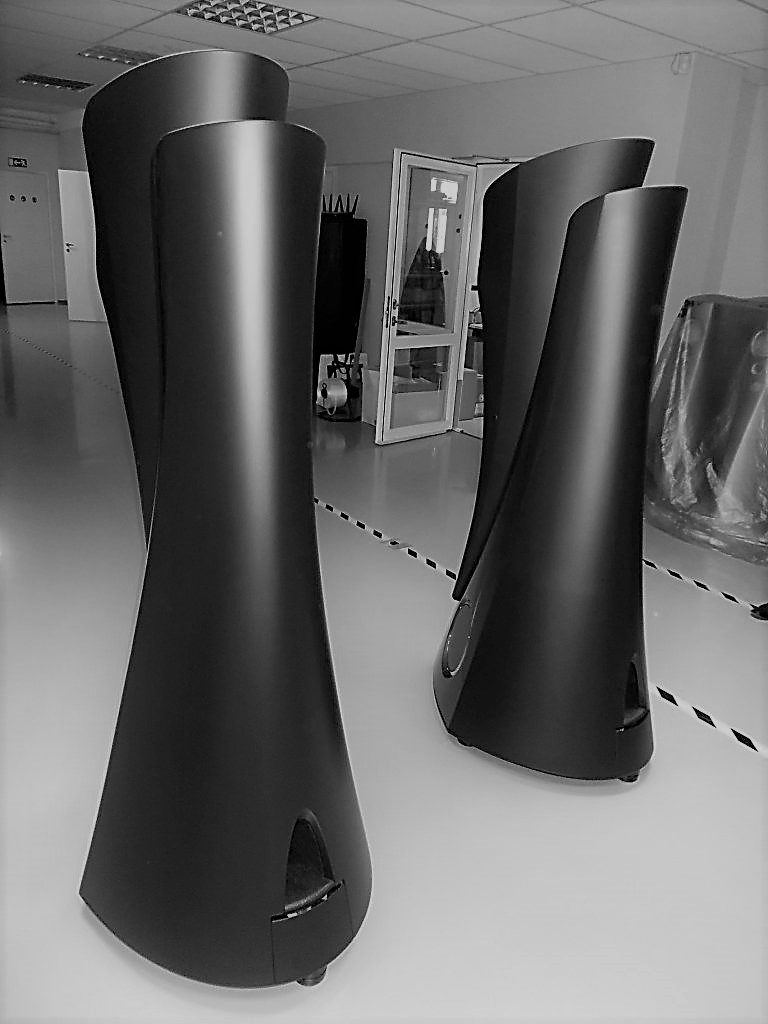
“I had 30 years of experience of building cheaper loudspeakers, and that taught me how to remove problems. Without this experience I would not have been ready for making real high-end speakers.”
Transformation from the rectangular MDF speakers to molded sculptural composite cabinets hasn’t been an entirely smooth process. Due to his background in solid engineering Alfred must have balanced his engineering know-how against design concerns and aspirations. Now he says he chose engineering but so that the design side stayed there too!
He’s not buying the idea that stereo speakers should be placed in the corner of the room. Instead they require or deserve a special spot in the room, off the front-wall, and there they are like any object of design! So the speakers need to be integrated in the room and the interior not just acoustically but design-wise too. All Estelon speakers are designed and made with this in mind.
The result? Behind the impressive prestige look of Estelon speakers there is always some technical feature that explains their shape and form. The curved cabinet is stronger than a flat one. The cabinet shape helps to remove port induced resonances as well as diffraction effects, which can be easily measured. And so on. A further advantage of the rounded shape characteristic to Estelon speaker cabinets is that they produce a uniform sound image irrespectively of where they are positioned in the room, while moving the position of a flat box speaker just a little produces a different sound in the room.
And the cabinet must be rounded from head to toe because all drivers, midwoofers included, benefit from the form. But that’s not enough: each driver in the tower must be positioned in exactly where they belong from a technical perspective. There’s no need to go deeper into the technical details of the Estelon speakers in this context. Those who look for more profound explanations can consult dozens of glowing reviews in the international press. But it’s useful to remember that whenever one lays eyes on the Estelon speakers with their sculptural shiny cabinets, every cm or inch in them is determined by technical considerations as well as aesthetic ones.
Estelon is not the only manufacturer of high-end loudspeakers who relies on Accuton drivers, luxurious cabinets and exquisite components (Marten from Sweden comes immediately to mind). In Alfred’s mind, his speakers are sufficiently and positively different from others so that all of the brands can have their own niche on the market.
Estelon premiered at the US market because it allowed them to participate in leading exhibitions with large press attendance, review possibilities, more publicity etc., and all this in English language. Nowadays the most affluent markets for Estelon products appear to be in Asia, but also in Europe. Last summer the luxurious Estelon Extreme Legacy Edition, finished in light Tudor grey metallic paint, as classic Rolls-Royce cars would, was invited to Rolls-Royce Enthusiasts’ Club’s prestigious annual rally event held in the grounds of Burghley House, Lincolnshire, England.
The new YB series is currently the best selling one, and everybody in the house seemed to be very enthusiastic about the series, as they were anxious to show the world the full potential of their new intelligent Lynx speaker.
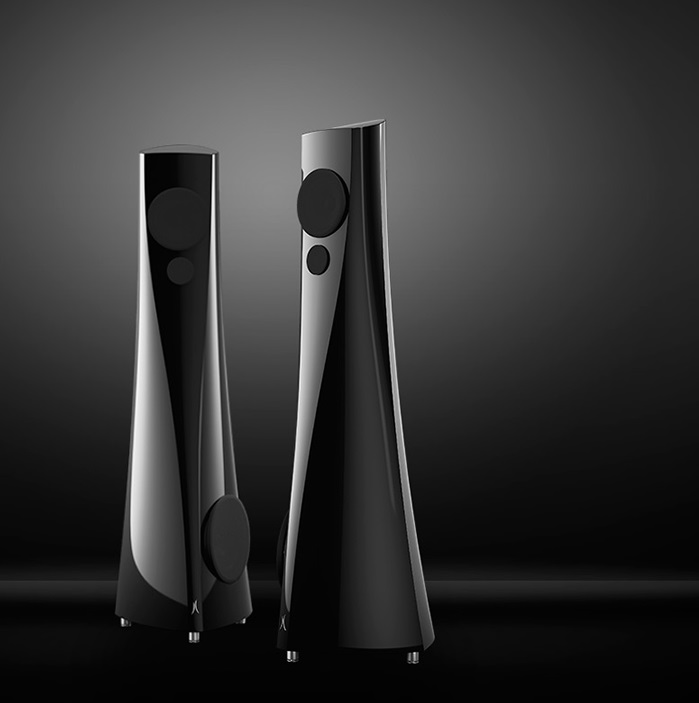
All speakers that come from the assembly line are subject to subjective listening by Alfred himself before they leave the house carefully packed. Alfred starts to explain how he uses ”all good music” for testing purpose and also for pleasure, but then he stops:
”You know, I’m only an engineer, good at designing loudspeakers. Running a business is another cup of tea. When we started the Estelon project I soon realized that I needed help to make it all happen business-wise, and I feel so lucky that I got my daughters on-board.”
The family
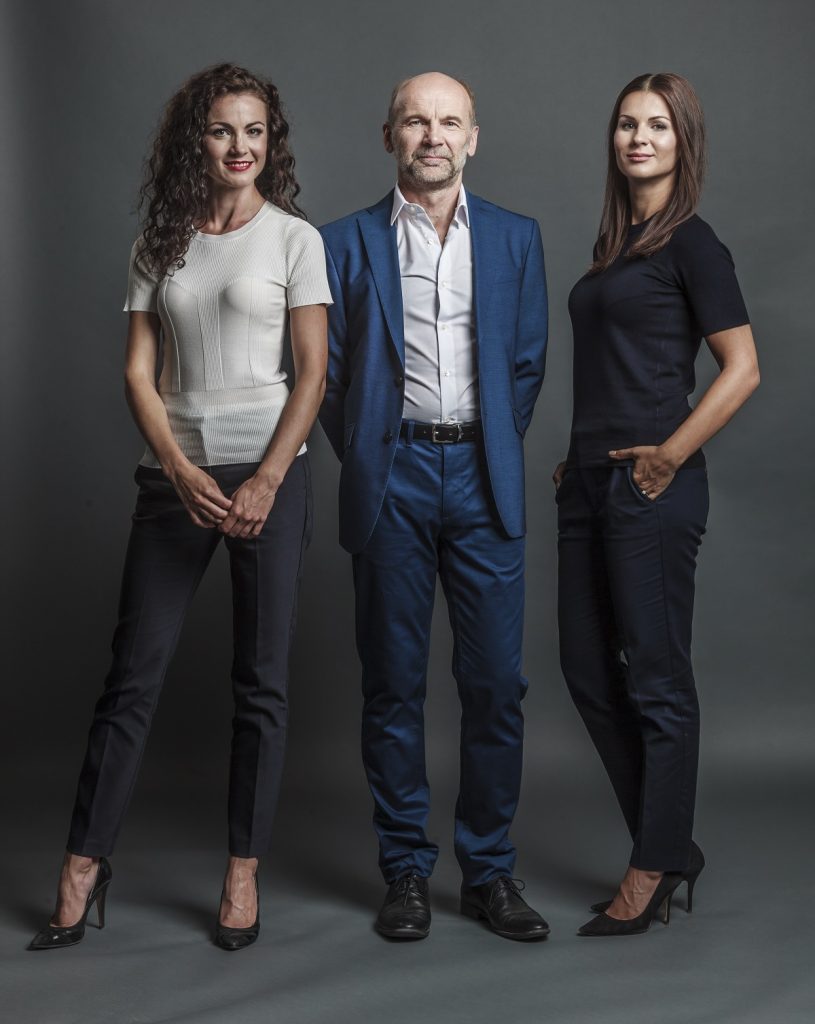
So how did Alissa and her sister actually become involved in the business and the company? And what’s the current division of labor between the three?
Here’s Alissa:
”In 2010 we decided to join forces and help our father to bring Estelon to life. His goal was to build world’s best sounding loudspeakers and something that would also look good. Together, also including Alfred’s brother and one family friend, we established the company – Alfred and Partners. Estelon is the name of the brand. By that time, I had already been involved for several years in some projects Alfred was working on. He had also taken me to audio shows to learn more about audio and sound. And it so happened that I liked the industry as I’ve always been fond of music!
Today, we’re all – Alfred, Kristiina and me – members of the board making decisions on strategic matters. Alfred is in charge of R&D, I am the CEO and Kristiina takes care of the brand development. Altogether we have a team of 13 people.”
And how does it feel to take the main responsibility and run the company?
”What motivates me the most is the fact that I can help my father in bringing his dreams into life and help him build something unique and top level on the global scale. Working on different markets around the world is very educative and interesting, and of course challenging. I like challenging myself and I believe that everything is possible, it is just a matter of how and when you will get there. This thinking has also helped our team to achieve international acknowledgement and numerous innovation awards. You really have to be persistent and brave to achieve success!”
Family dynamics? It is well known that family run business differs from business run by hired professionals due to interpersonal relationships. How has it worked in your case?
”I have a very good relationship with my father. He’s an easy person to discuss with and share ideas and take decisions. We think quite alike. Even if we have different opinions on something, we always listen to each other and explain the background of our preferred decisions. We never fight. And this is very healthy for the climate that we have in the company. Also with my sister Kristiina – we’ve learned to work with each other. Knowing the other person so well definitely helps, since you know how the other person reacts and you know how to approach not to cause any conflicts. And I believe that we have this “family mentality” in the whole team.”
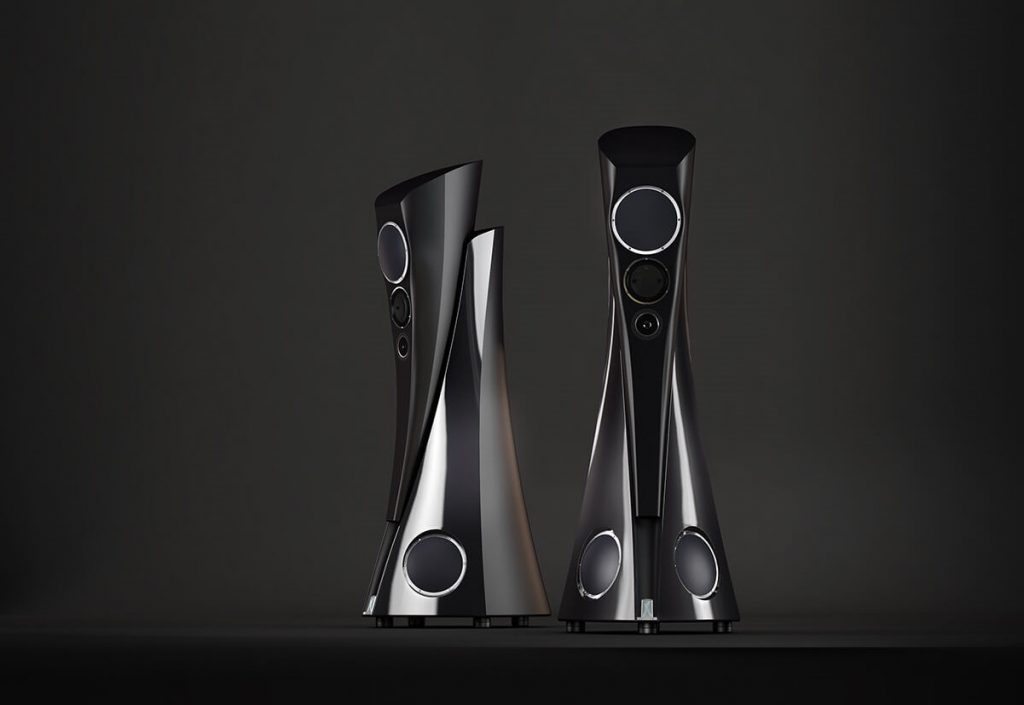
Enjoying the atmosphere
Towards the end of my visit to Estelon we briefly exposed us to the sound world of the stunning Extreme Legacy Edition. It’s an outstanding speaker whose height and physical presence makes one feel humble. The top part can be vertically adjusted according to the requirements of the room, the distance to the listening seat, and personal taste, the type of music included. Alfred demoed the point with some choir music, and the effect was obvious.
To listen to Extreme Legacys is listening in a grand style. It’s like being close to a giant who whispers something to your ear. Music takes a deep breath and flows out naturally and unstressed, as if the speaker knew that it has enough horse powers, and that therefore it did not have to prove anything. Extreme Legacy is no doubt a statement in any room where it is carried, both visually and sonically. It’s not that often one gets a chance to experience such a “total work of art” (Gesamtkunstwerk).


